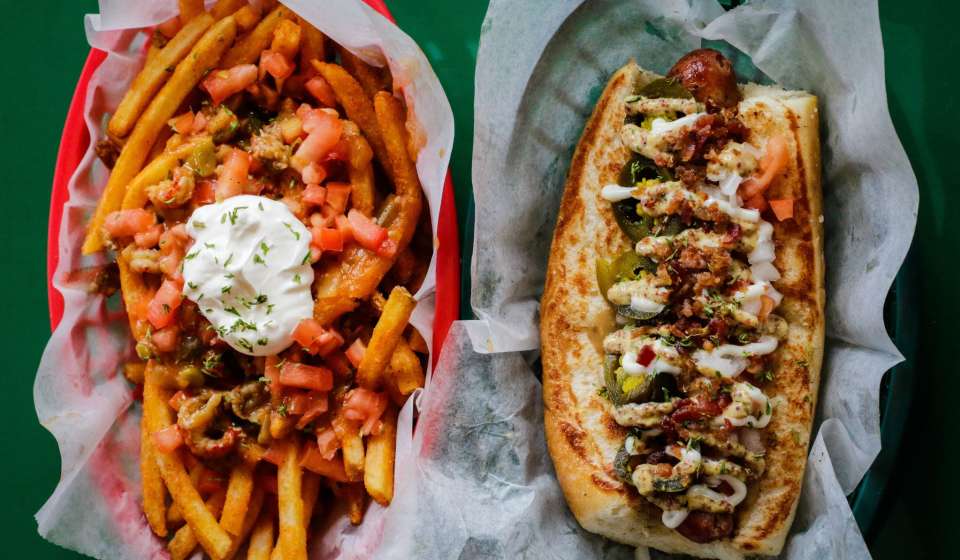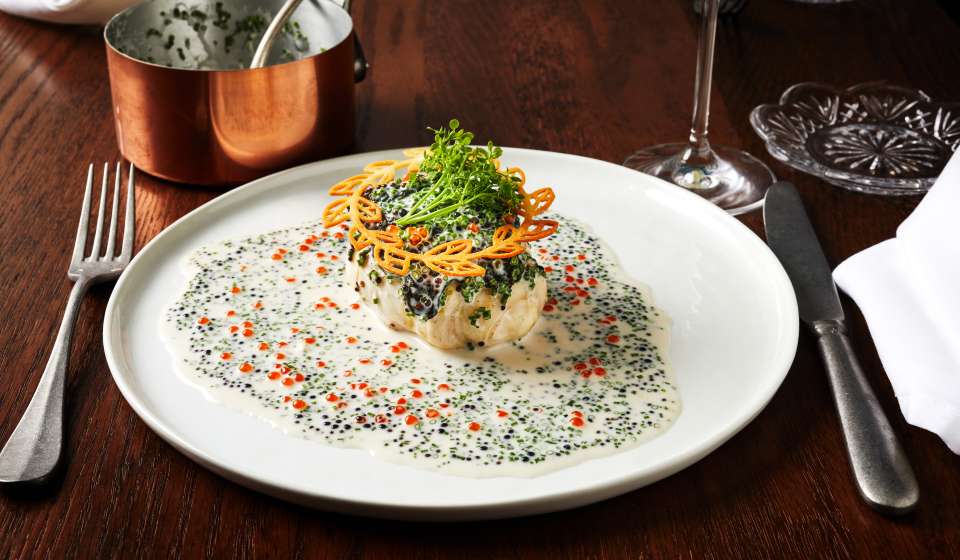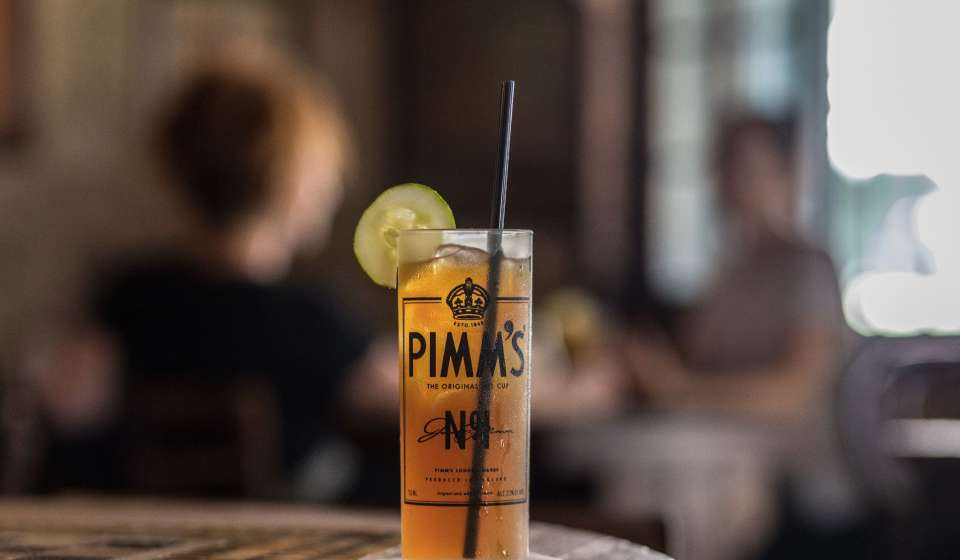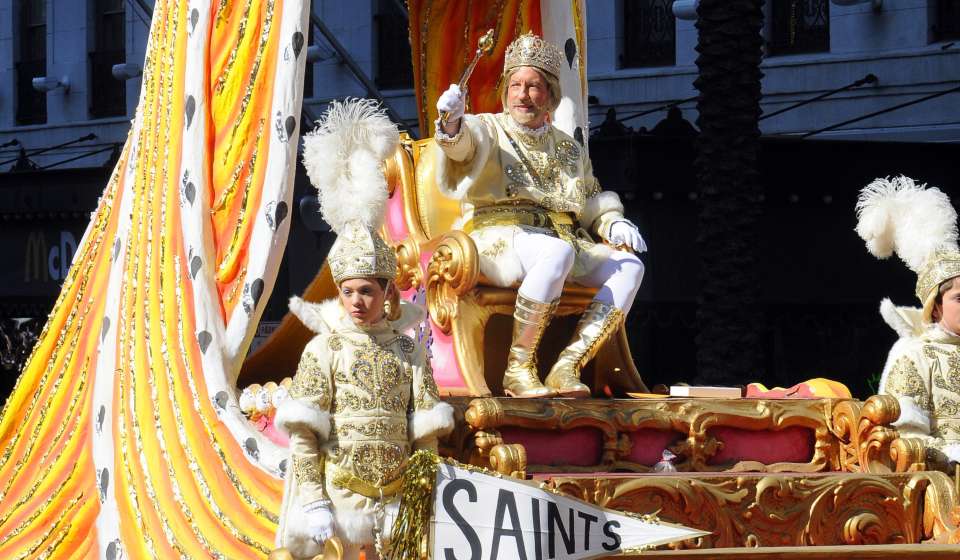
-
Wedding Tools
- Complimentary Planning Assistance
- Destination Wedding Guide Digital Copy
- Elopement Packages
- Marriage License & Legal Essentials
- Checklist
- Welcome Bag Ideas
- Second Lines
- The History of Wedding Umbrellas and More in New Orleans
- Wedding Cake Pulls
- Destination Wedding Guide Printed Copy
- Wedding Inspiration
-
Venues
-
Vendors
-
Pre & Post Wedding
- Wedding Inspiration
- Contact Us
-
Why New Orleans Is Built To Host
- Hotels
-
Meeting & Event Venues
-
Services & Planning Tools
-
Group PR & Marketing Tools
- Convention Calendar
- Testimonials
- Awards
-
Online RFP
- Availability Grid
- Contact Us
-
Things to Do
-
Eat
-
Drink
-
Stay
- Book a New Orleans Hotel
- Hotel Directory
- Bed And Breakfasts: Hotels - New Orleans & Company
-
Places To Stay: New Orleans Hotels - New Orleans & Company
- Saint Charles Avenue Hotels
- Luxury Hotels
- Garden District Hotels
- French Quarter Hotels and Lodging
- Downtown/Central Business District Hotels and Lodging
- Bourbon Street Hotels
- Green Hotels
- Bourbon Street Balcony Hotels - New Orleans & Company
- Haunted Hotels in New Orleans
- Pet-Friendly Hotels
- Historic Hotels
-
Calendar
-
Trip Planning Tools
- Insider's Blog
- LOVENOLA.TV 24/7 Broadcast
-
Weddings
-
Wedding Tools
- Complimentary Planning Assistance
- Destination Wedding Guide Digital Copy
- Elopement Packages
- Marriage License & Legal Essentials
- Checklist
- Welcome Bag Ideas
- Second Lines
- The History of Wedding Umbrellas and More in New Orleans
- Wedding Cake Pulls
- Destination Wedding Guide Printed Copy
- Wedding Inspiration
-
Venues
-
Vendors
-
Pre & Post Wedding
- Wedding Inspiration
- Contact Us
-
Wedding Tools
-
Meeting Planners
-
Why New Orleans Is Built To Host
- Hotels
-
Meeting & Event Venues
-
Services & Planning Tools
-
Group PR & Marketing Tools
- Convention Calendar
- Testimonials
- Awards
-
Online RFP
- Availability Grid
- Contact Us
-
Why New Orleans Is Built To Host
-
Groups
-
Travel Professionals
-
Membership
-
Press and Media
- Community
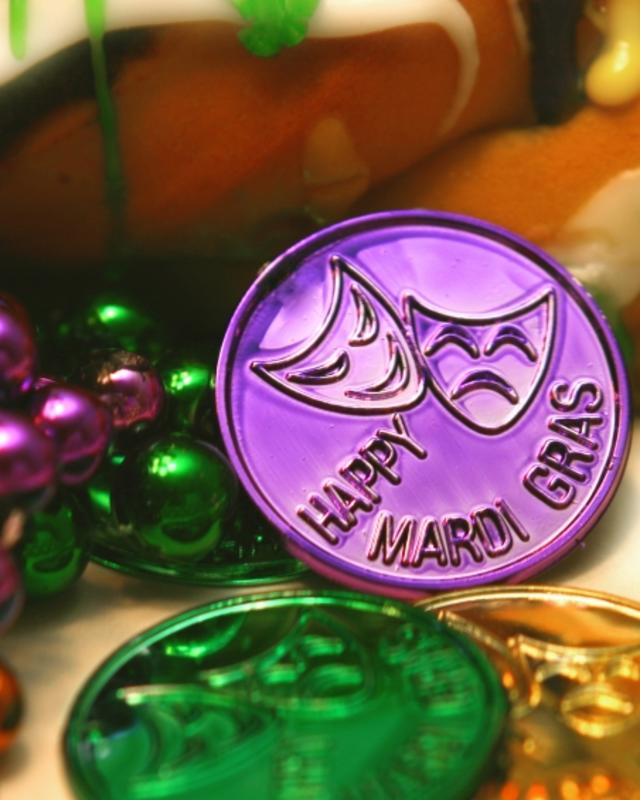

Mardi Gras Doubloon
Learn more about this iconic parade throw
What makes New Orleans Mardi Gras parades unique from— and much more fun than—parades across the country is simple: active crowd participation. These float riders don’t just stand and wave (or try to lip-sync songs), they throw stuff to you! From beads, cups, and stuffed animals to bags of chips, painted coconuts, and even themed toilet paper rolls, the variety of “throws” you can collect seems to grow every year. But, some of the most prized throws across every Mardi Gras krewe are doubloons.
Small toys and strings of beads have been thrown by members of New Orleans Carnival krewes since the 1800s. “Wooden nickels” appeared during Carnival in the 1930s, but krewes started throwing coins made of aluminum beginning in the 1960s.
A King’s Ransom - The Krewe of Rex and the New Doubloon
The story goes that local artist H. Alvin Sharpe got word that the School of Design, better known as the Rex Organization, was looking for a new throw. The men in charge of the Krewe of Rex recognized their position in the Carnival hierarchy and regularly took steps to maintain it. By the late 1950s, parades grew in number and spread out into most neighborhoods of the city, with some expanding into the suburbs. Rex, they decided, needed something new in order to keep its place at the top. Sharpe’s solution: coins minted from aluminum—a unique and fitting throw for the King of Carnival. He shared his proposal with local financier and then-Captain of the Rex Organization Darwin Fenner, but Fenner was unconvinced, voicing his concerns about crowd safety. Undeterred, Sharpe made an appointment to meet at Fenner’s office to present his design in person. When he walked into the room, Sharpe threw a handful of the blank prototype coins at Fenner. They bounced off of the captain, harmlessly hitting the floor. With that, the idea was sold.
Since Sharpe was using aluminum, the coins could be larger than a silver dollar and much lighter. This size made his coins similar to the gold Spanish doblón—what most would recognize from nearly any classic pirate story. Hence, the “Mardi Gras Doubloon” was born. Fenner placed an order for 3,000 of the coins, which would have a bust of Rex on the front and the School of Design’s coat of arms on the reverse. The coins were to be un-dated; if the throw turned out to be a flop, krewe members could throw the rest the following year.
As you likely guessed, the doubloons were a huge success, so much so that the next year’s order was not only larger but also were stamped with the date. Other krewes soon followed suit, minting their own doubloons. Throughout the 1960s and 1970s, the doubloon became the most coveted throw in a parade.
The Modern Mardi Gras Doubloon
Most doubloons thrown are minted on aluminum blanks in their natural, silvery color, but through an electrochemical process called anodization, basic silver can become almost any color you can think of. Fenner included a small number of gold-anodized doubloons in that first 1960 order; this choice eventually became the standardized blank for their doubloons. These were more expensive, but nothing less would do for the King of Carnival and his krewe. Many krewes continue to throw the classic silver doubloons, but others make doubloons in multiple colors. The Krewe of Bacchus, for example, has even stratified who can throw what color doubloon. The krewe’s celebrity king throws wine-colored doubloons with Bacchus on the front and his portrait on the rear, mounted officers of the krewe throw black “Riding Lieutenant” doubloons, and the krewe members on the floats throw purple, green, and gold doubloons.
In addition to the basic aluminum doubloons thrown from floats, many krewes mint special doubloons in bronze—some of which are dual-colored or even tri-colored. Many organizations carry doubloons to an even more valuable level, minting the coins in sterling silver. Thankfully, these heavier projectiles aren’t permitted among the usual throws; instead, Krewe members give these coins away as keepsakes for family and close friends. However, stories have been told since the 60s of riders making the expensive mistake of throwing real silver doubloons from the float—much to the delight of avid doubloon collectors.
Even though Carnival throws have gone “high-tech” with fiber optics, blinking LEDs, and other interesting twists, the doubloon is still considered one of the most iconic and collectible throws. In his annual Mardi Gras Guide, Arthur Hardy uses an image of each krewe’s doubloon to start their entry, and a number of groups and shops—both physical and online—exist for doubloon collecting and swapping.
Long live the doubloon!


